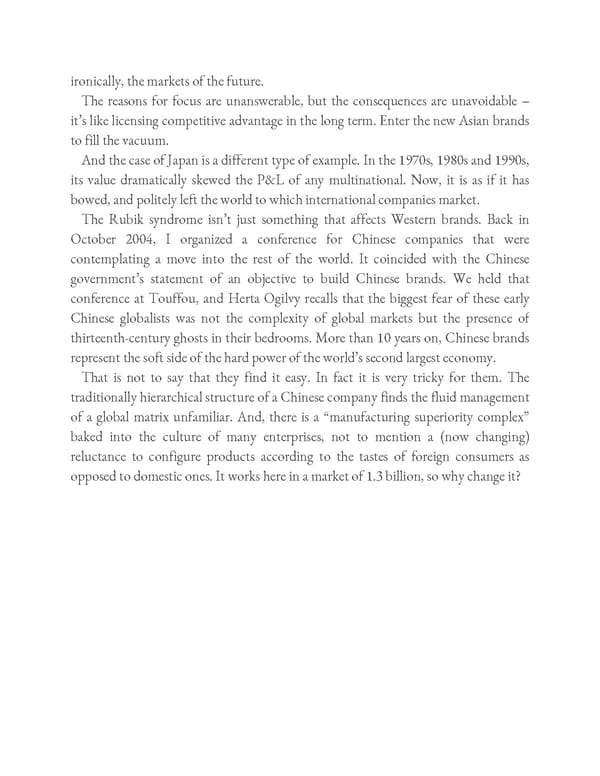ironically, the markets of the future. The reasons for focus are unanswerable, but the consequences are unavoidable – it’s like licensing competitive advantage in the long term. Enter the new Asian brands to fill the vacuum. And the case of Japan is a different type of example. In the 1970s, 1980s and 1990s, its value dramatically skewed the P&L of any multinational. Now, it is as if it has bowed, and politely left the world to which international companies market. The Rubik syndrome isn’t just something that affects Western brands. Back in October 2004, I organized a conference for Chinese companies that were contemplating a move into the rest of the world. It coincided with the Chinese government’s statement of an objective to build Chinese brands. We held that conference at Touffou, and Herta Ogilvy recalls that the biggest fear of these early Chinese globalists was not the complexity of global markets but the presence of thirteenth-century ghosts in their bedrooms. More than 10 years on, Chinese brands represent the soft side of the hard power of the world’s second largest economy. That is not to say that they find it easy. In fact it is very tricky for them. The traditionally hierarchical structure of a Chinese company finds the fluid management of a global matrix unfamiliar. And, there is a “manufacturing superiority complex” baked into the culture of many enterprises, not to mention a (now changing) reluctance to configure products according to the tastes of foreign consumers as opposed to domestic ones. It works here in a market of 1.3 billion, so why change it?
 Ogilvy on Advertising in the Digital Age Page 451 Page 453
Ogilvy on Advertising in the Digital Age Page 451 Page 453